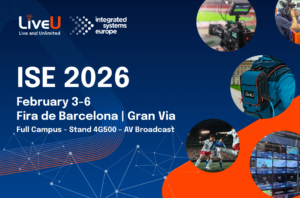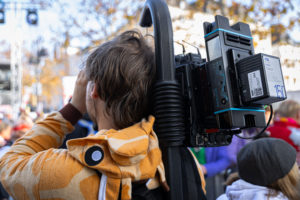Premier microwave, RF, wireless and radar players gather in the city of light for the European Microwave Week (EuMW). Industry-leading T&M specialist Rohde & Schwarz will present a radiating portfolio of products and solutions in Paris for various application fields, pushing the limits in the Gigahertz to Terahertz frequency ranges.
www.rohde-schwarz.com
Paris is host city of the EuMW 2024
Rohde & Schwarz will showcase its latest RF and microwave portfolio and solutions following the motto “From Gigahertz to Terahertz” at this year’s European Microwave Week in Paris. At the exhibition, taking place from September 24 to 26, 2024 in the Paris Expo Porte de Versailles venue, visitors can learn at booth 401L about the company’s top-notch applications to solve pressing test challenges RF engineers are facing right now in component design and next-generation wireless, as well as in the automotive and aerospace and defense industries. Highlights will include EVM measurements and wideband modulated load pull analysis for RF frontends. A system for 6G wireless data transmission based on photonics will address state-of-the-art research for next-generation wireless technologies. Disruptive innovations in automotive radar production and testing as well as industry-leading solutions for 5G NTN satellite testing will round out the company’s display at the EuMW 2024.
Wide spectrum of RF and microwave component testing
Active components such as power amplifiers are integral for any RF frontend design. With increasing data rates, complex modulation schemes are becoming critical in wireless connectivity applications. A low error vector magnitude (EVM) at both the component and system levels is key to ensuring that these modulation schemes are robust and stable. Given the unprecedented performance levels of these power amplifiers, EVM measurements are a challenging task in RF frontend design. Rohde & Schwarz will present at the EuMW its updated R&S SMW200A vector signal generator, which comes with enhanced performance and unparalleled flexibility to meet the most demanding EVM requirements, ideal for power amplifier verification. Equipped with the new linearize RF path software option, the signal generator enables better EVM/ACLR at high output power with digital pre-distortion-based optimization. The high-end instrument perfectly matches the industry-leading R&S FSW signal and spectrum analyzer. At the EuMW, however, the setup features the powerful R&S FSVA3000 on the analysis side, including its unique IQ noise cancellation software-based feature to achieve outstanding EVM measurement performance thanks to a noise-corrected measurement path.
Besides EVM, power amplifier efficiency is key in RF frontend design. The RF frontend drives signals into an antenna for wireless transmissions in its intended application. These antennas are designed to have a nominal impedance of 50 Ohms. However, due to their wide frequency coverage, the actual impedance can often deviate significantly from 50 Ohms. The impedance encountered by the RF frontend greatly influences its performance, while the influence on its performance and efficiency is unpredictable. Therefore, it’s crucial to verify the performance across a range of impedance variations. To ensure the power amplifier’s target specifications, like minimized power consumption or optimized modulation performance, wideband modulated load pull analysis is a vital method for characterizing nonlinear devices. At the EuMW, Rohde & Schwarz will demonstrate a new setup for wideband modulated load pull, featuring the R&S SMW200A vector signal generator in combination with the R&S RTP164 oscilloscope. With this setup, RF engineers can verify the system-level performance of the RF frontend with different impedances and verify KPIs such as gain, EVM, and ACLR across varying impedance conditions.
For high-throughput RF component verification, Rohde & Schwarz demonstrates for the first time the PVT360A performance vector tester equipped with a new high-power option. The single-box tester combines two independent vector signal generators and vector signal analyzers in one instrument and provides outstanding measurement speed, making it ideal for characterization and production environments. The new option will provide up to 20 dBm RMS output power, making it well-equipped for any applications where high input power to the DUT is required or where high losses can be expected. It now covers a frequency range up to 8.5 GHz for additional potential frequency bands for the lower parts of 5G NR FR3 (7.125 GHz to 24.25 GHz). At the EuMW, visitors can get a first glimpse of the upgraded instrument version, which will be available soon.
Also measuring jitter for clocks in high-speed digital designs is addressed at the Rohde & Schwarz booth. With increasing data rates, the limits for overall system jitter become ever tighter, especially for the various components of the clock tree. Phase noise analyzers are the instruments of choice for verifying the jitter performance of clocks. With the R&S FSWP, Rohde & Schwarz will demonstrate at the EuMW the best phase noise analyzer on the market, featuring the highest sensitivity. It is ideal for super low phase noise and jitter measurements even at frequencies above 50 GHz, as needed for common electrical interface OIF CEI-224G (56 GHz) or ultra-fast LAN IEEE 802.3dj (53 GHz). At EuMW, it is shown analyzing beyond 50 GHz with cross-correlation, achieving the most accurate results that reflect the true DUT performance.
Another demo will cover intermodulation (IM) measurements for 6G D band components. When characterizing components for tomorrow’s 6G communications systems, developers have to test the intermodulation of the active device in addition to the S-parameters. The R&S ZNA67 vector network analyzer in combination with the R&S ZCDS170 dual source converters allows a simplified measurement setup that directly provides a two-tone output signal for IM testing up to 170 GHz.
Next generation wireless technologies
The door to the 6G era has been opened, and it will enable new application scenarios in industry, medical technology, and everyday life. This will bring about new requirements for latency and data transmission rates. While sub-THz frequencies up to 300 GHz for communication within 6G networks will potentially be introduced at a later stage, this frequency band will be indispensable to realize the full potential of the metaverse and extended reality (XR) applications. On the path to 6G, it is important to create THz transmission sources that offer high signal quality and cover as wide a frequency range as possible. In the future, this might be achieved by integrating optical technologies with electronics. Such THz components could be used beyond communications and data transmission, finding applications in sensing and imaging. At the EuMW, Rohde & Schwarz will present its proof-of-concept for an ultra-stable tunable THz system for 6G wireless data transmission based on photonics. Developed within the 6G-ADLANTIK project, funded by the Federal Ministry of Education and Research of Germany (BMBF), it enables the photonic generation of THz signals based on frequency comb technology. In this approach, a photodiode efficiently converts an optical beat signal derived from lasers at slightly different optical frequencies into an electrical signal via a photomixing process. The antenna structure surrounding the photomixer translates the oscillating photocurrent into a THz wave. The resulting signals can be modulated and demodulated for 6G wireless communications and can be tuned easily over a wide frequency range. The presented system also can be extended for component characterization with coherently received THz signals. A THz waveguide architecture simulation and design as well as the development of ultra-low phase noise photonic reference oscillators are also part of the scope-of-work for this project.
Another highlight at the Rohde & Schwarz booth will be a setup for wideband signal generation and analysis in the H band, featuring the new R&S SFI100A wideband IF vector signal generator combined with the new R&S FC330ST/SR frequency converters. The signal generator generates signals with up to 10 GHz RF modulation bandwidth. The frequency converters are designed to up- and down-convert the intermediate frequency (IF) signals to and from the RF frequency range of 220 to 330 GHz, known as H band. Their high-performance balanced mixer with low conversion loss ensures precise measurements. An additional integrated IF amplifier helps to achieve exceptional sensitivity and signal performance. The solution supports an IF range of up to 35 GHz, allowing for ultra-wide bandwidth signals to be transmitted and received. The R&S RTP oscilloscope is used in the demo setup to receive the down-converted IF signals. Equipped with the versatile R&S VSE signal analysis software, the baseband signals can be analyzed directly on the instrument. The H band is gaining importance for various applications, not just for 6G research but also in radar technology or advanced imaging for security and healthcare.
Next level automotive radar production testing
Next-generation radar, pivotal for the evolution of ADAS and autonomous driving, requires test solutions that deliver unrivaled accuracy, efficiency, and reliability. To drive this development further, Rohde & Schwarz will bring two radical innovations in automotive radar production testing to the EuMW, offering the industry a hitherto unseen price-performance point. The R&S RadEsT (Radar Essential Tester) provides comprehensive testing of automotive radar sensors at production line speed. The system combines MMIC testing at wafer and component levels with radar hardware and software-in-the-loop testing across diverse driving scenarios, including close-range object simulation and multi-target environments. It delivers unparalleled performance for radar antenna pattern verification in open-air scenarios across multiple test lanes simultaneously, radically increasing throughput.









